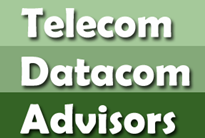News
AT&T Ranks #1 in Telecom Globally in FORTUNE’s Most Admired Companies for Third Year in a Row
AT&T Also Ranked Among World's Top 50 Most Admired Companies
AT&T* was recognized by FORTUNE magazine as the Most Admired Telecommunications Company in the world
“Our industry has never been more dynamic than it is right now. And that makes this recognition particularly meaningful,” said AT&T Chairman and CEO Randall Stephenson. “It’s really a tribute to the hard work and customer commitment of each and every employee in the AT&T family.”
The publication also placed AT&T at #37 among the Top 50 Most Admired companies in the world. This is our fourth year on the Global Top 50 list. AT&T is also the only communications company on the list. We ranked first in all 9 attributes again, including innovation, financial soundness and quality of products/services.
FORTUNE’s Most Admired Companies lists are among the most highly respected indicators of corporate performance and reputation.
FORTUNE and its partner, the Hay Group, survey top executives and directors from FORTUNE 1000 and Global 500 companies and financial analysts to identify the Most Admired Companies.
They seek companies with the strongest reputations, both in their own industry and overall. Then, they rate companies on various attributes. This includes ability to attract and retain talented people, quality of products and services, quality of management, innovation, social responsibility, and use of corporate assets and long-term investment value.
*AT&T products and services are provided or offered by subsidiaries and affiliates of AT&T Inc. under the AT&T brand and not by AT&T Inc.
News from AT&T 
Travelers at Tampa International Airport will be the First to Experience AT&T’s Super-Fast Service
DALLAS, January 14, 2021
1 Based on AT&T analysis of Ookla® Speedtest Intelligence® data median 5G download speeds for Q4 2020 comparing ‘nationwide’ 5G networks. 5G Coverage analysis based on carrier’s public statements. Ookla trademarks used under license and reprinted with permission. AT&T 5G requires compatible device and plan. Coverage not available everywhere. Visit att.com/5Gforyou to learn more.
2 5G and 5G+ require compatible device and plan. 5G and 5G+ may not be in your area. For coverage details, see att.com/5Gforyou. With unlimited plans, AT&T may slow data speeds if the network is busy.
Fiber-Optic Internet In the United States
Fiber to the home or FTTH as it is commonly referred to is the gold standard of residential internet connections.
With much of the backbone of the internet deployed using fiber optic cable, it is no surprise that fiber optics are the fastest form of broadband technology.
In fact, the latest deployments by Verizon FiOS and Google Fiber are capable of reaching speeds of 500mbps and 1gbps respectively.
The biggest benefit of fiber is that it can offer much faster speeds over much longer distances than traditional copper-based technologies like DSL and cable. The actual service depends on the company providing the service, but in most cases fiber is the best bang for the buck broadband and future-proof for as long as we can tell. Even if typical broadband speeds become 1000 times faster in 20 years, a single existing fiber-optic connection can still support it.
For more details about the number of fiber optic providers and what communities they serve, we've compiled a full list of a every provider offering fiber optic internet service in the United States.
Should You Get Fiber Optic Internet?
If you have a fiber provider in your area and you are interested in near instantaneous connection speeds then fiber optic is your best bet. We definitely recommend this technology.
Benefits of Fiber Optic Broadband
Transfer lots of data quickly.
Because fiber broadband is the fastest internet available, you can transfer large amounts of data quickly and seamlessly. This means that whether you are watching a movie on Netflix or video chatting with family in Asia or Europe your connection will be seamless and quick (provided they are on fiber too).
Next Generation Technology
Because fiber-optics uses light instead of electricity to transmit data, the frequencies that are used are much higher and the data capacity is much greater. The fiber-optic cable itself is made from glass or plastic which is not susceptible to electromagnetic interference like metal cables. This allows data to flow over great distances without degrading. Interference and energy loss is the limiting factor for all types of communication transmissions and fiber optics handles these factors much better than other modes of transmission. In the future, more and more of our world will be connected via fiber optics as we outgrow the old copper based infrastructures.
Limitations of Fiber
New Infrastructure Requirements
The biggest limitation hindering widespread fiber optic adoption is the cost requirements of implementing new fiber optic lines when old infrastructures such as DSL and cable are still serving customers.
Installing a new fiber optic network is a large capital expenditure for service providers. However, as the cost to maintain aging copper networks increases over time, more and more will choose to upgrade to fiber if not purely for financial reasons. Of course as consumer demand for better and faster broadband increases, service providers will have to install fiber-optic networks to meet that demand. Our mission is to bring that power to the consumer.
How Fiber Optic Internet Works

From the ultra-fast transatlantic fiber lines that connect the Americas and Europe, to the data hubs that connect you to the internet, everything comes back to fiber... But how does it work?
Well, at a fundamental level, fiber optic communication works by sending small binary transmissions of light down a fiber optic wire. Then, at each end of the fiber optic infrastructure there is a computer, repeater, or optic amplifier that makes sense of the signal or amplifies it so it can continue on down the network.
Similarly, fiber to the home technology works by delivering a fiber optic connection all the way to the premises of the consumer allowing for much faster and lower latency speeds than DSL or cable.
Fiber Optic Performance
According to the FCC, companies providing fiber optic internet connections offer 117 percent of the advertised speed during peak times, greater than that of DSL and cable.
Additionally, the FCC found that fiber internet has the lowest latency (18ms) of all of service types tested. If you are unfamiliar, latency is a key metric to how fast your internet responds and "feels."
Even though fiber optic internet is the way of the future, as of 2012 only 23% of Americans have access to fiber broadband ranking the United States 14th of many western countries in fiber optic penetration according to the OECD.

